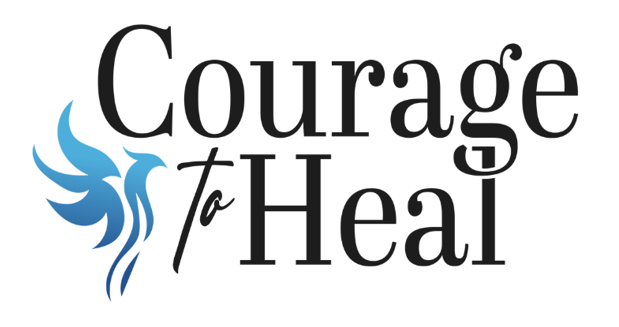Using Breathwork to Heal Anxiety and PTSD
For thousands of years, people across diverse cultures have recognized the power of the breath as a tool for healing and transformation. Today, as we face growing rates of anxiety and trauma-related disorders, breathwork practices are experiencing a well-deserved resurgence in popularity. These techniques offer accessible, drug-free approaches to managing mental health challenges like anxiety and PTSD.
What is Breathwork?
Breathwork refers to a variety of breathing techniques designed to influence physical, mental, and emotional states. These practices involve consciously controlling the breath to affect bodily functions and promote wellbeing.
From ancient yogic traditions to modern therapeutic approaches, breathwork spans cultures and centuries, appearing in practices from medieval Russian Orthodox Christianity to Hawaiian spiritual traditions to Chinese Qigong.
How Breathwork Helps Anxiety and PTSD
Breathwork offers several pathways to relief for those struggling with anxiety and PTSD:
Autonomic nervous system regulation: Many breathing techniques activate the parasympathetic ("rest and digest") nervous system, counteracting the sympathetic fight-or-flight response common in anxiety and PTSD.
Emotional processing: Some breathwork practices create safe opportunities to access, process, and release stored emotions and traumatic memories.
Mindfulness development: Focusing on the breath anchors awareness to the present moment, interrupting rumination and worry cycles.
Physiological benefits: Proper breathing optimizes oxygen levels, reduces muscle tension, and can help alleviate physical symptoms of anxiety.
Breathwork Techniques
The “Physiological Sigh”
The physiological sigh is a natural breathing pattern your body uses to calm itself — often during sleep or after crying. It involves two quick inhales through the nose followed by one slow, extended exhale through the mouth. This technique rapidly downregulates the nervous system and helps release tension held in the diaphragm and intercostal muscles.
Inhale through your nose until your lungs are about 80% full.
Do a second, quick sip of air in through the nose — filling the lungs completely.
Exhale slowly and fully through the mouth (as if gently blowing through a straw), longer than both inhales combined.
Repeat 3–5 times, or as needed.
If you're working with trauma, this breath can be an immediate way to gently reclaim a sense of safety — without needing to cognitively process anything.
4-7-8 Breathing
Developed by Dr. Andrew Weil, this technique acts as a "natural tranquilizer":
Inhale quietly through the nose for 4 counts
Hold the breath for 7 counts
Exhale completely through the mouth for 8 counts
Repeat 3-4 times
This practice is especially helpful before bed for those with anxiety-related insomnia.
Alternate Nostril Breathing
This yogic technique (Nadi Shodhana) balances the left and right hemispheres of the brain:
Close your right nostril with your right thumb
Inhale through your left nostril
Close your left nostril with your right ring finger
Release your thumb and exhale through your right nostril
Inhale through your right nostril
Close your right nostril and exhale through your left
Continue for 5-10 cycles
This practice is particularly effective for reducing anxiety and promoting mental clarity.
Neurosomatic Breathwork
Neurosomatic Breathwork, developed by Anna Khandrueva of Courage to Heal Therapy, represents a more intensive approach to breathwork. This high-ventilation technique involves deep, connected breathing combined with intention setting, evocative music, and post-breathwork meditation.
As a deep ventilation practice, Neurosomatic Breathwork is particularly notable for its potential benefits for those with PTSD. Research on similar high-ventilation techniques suggests promising outcomes:
The practice can facilitate the release of pent-up emotions and unresolved traumas in a safe, controlled environment
It activates the parasympathetic nervous system while lowering cortisol (stress hormone) levels
Participants often report lower depression scores and improved subjective well-being after sessions
Interestingly, the right kind of breathwork can produce effects similar to those of therapeutic psilocybin, which has shown promise for treating depression, anxiety, and PTSD.
Holotropic Breathwork
Holotropic Breathwork, developed by psychiatrist Stanislav Grof and his wife Christina in the 1970s, is an intense therapeutic breathing practice designed to access non-ordinary states of consciousness for healing and self-exploration.
The technique involves rapid, deep breathing while lying down, often accompanied by evocative music and followed by expressive activities like drawing mandalas. The term "holotropic" means "moving toward wholeness," reflecting the practice's aim to integrate fragmented aspects of the psyche.
Sessions are typically conducted in group settings under the guidance of certified facilitators and can last several hours, during which participants may experience a wide range of phenomena including emotional release, physical sensations, vivid imagery, past life memories, birth experiences, and mystical states.
Many practitioners report profound insights, emotional breakthroughs, and resolution of psychological issues that conventional therapy hadn't addressed. While similar to other high-ventilation techniques like Neurosomatic Breathwork, Holotropic Breathwork is distinguished by its particular theoretical framework rooted in transpersonal psychology and its structured group format.
Getting Started with Breathwork for Anxiety and PTSD
If you're considering breathwork for anxiety or PTSD, here are some recommendations:
Start simple: Begin with basic techniques like the physiological sigh or 4-7-8 breathing, which are gentle yet effective.
Practice regularly: Even 5-10 minutes daily can yield significant benefits over time.
Consider guided sessions: For deeper work, especially with techniques like Neurosomatic Breathwork, working with a trained facilitator is recommended, particularly for those with trauma histories.
Integrate with therapy: Breathwork can complement traditional therapy approaches for anxiety and PTSD rather than replace them.
Listen to your body: Some high-ventilation practices are not recommended for those with certain conditions. Always consult a healthcare provider if you have medical concerns.
Breathwork offers a powerful, accessible approach to managing anxiety and PTSD symptoms. From simple techniques you can practice anywhere to deeper practices like Neurosomatic Breathwork that may facilitate profound healing and emotional release, conscious breathing provides tools that have supported human wellbeing for millennia.
In our fast-paced world where stress seems constant, reconnecting with the simple yet profound power of the breath may be one of the most valuable skills we can develop for mental health resilience.




